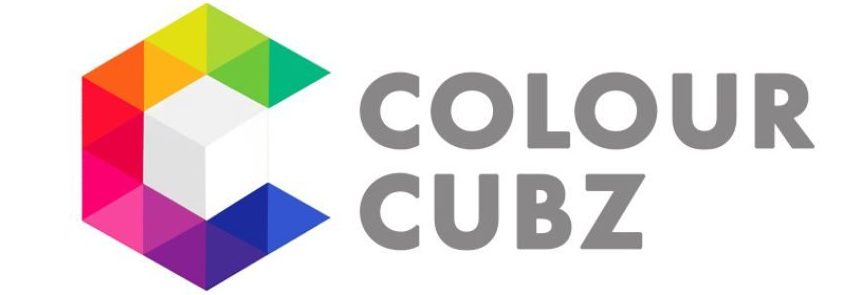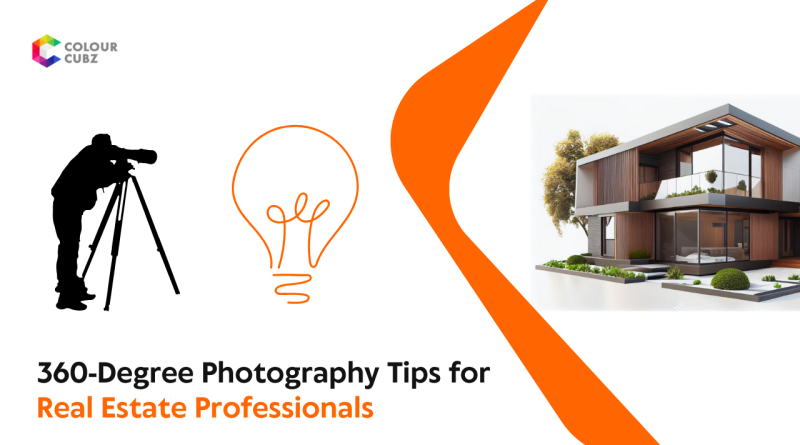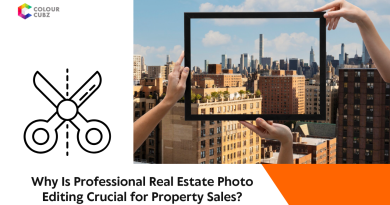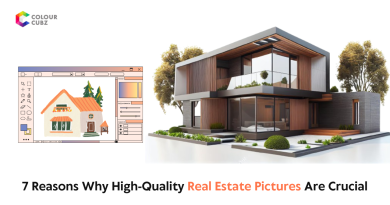360-Degree Photography Tips for Real Estate Professionals
In the digital age, visual content has become the backbone of real estate marketing. 360-degree photography offers a fully immersive experience that static images cannot provide. With a single image, viewers can explore an entire room, making them feel like they’re already inside the property. This technique not only increases engagement but also builds trust with potential buyers. Real estate professionals who embrace this technology gain a competitive edge in a crowded market. Let’s dive into how you can make the most of 360-degree photography in your listings.
Why 360-Degree Photography is Crucial in Real Estate
- Enhanced Buyer Engagement
360-degree images allow users to pan and explore every corner of a room, offering a sense of presence that flat photos cannot achieve. This interactivity keeps viewers on your listings longer, increasing the chances of conversion. The immersive nature of these visuals helps users remember the property better. It appeals to tech-savvy buyers who expect modern, digital experiences. Enhanced engagement also leads to more shares on social media and listing platforms. The more people engage, the faster the property can be sold. - Virtual Open Houses
With 360-degree photography, you can create virtual tours that operate as 24/7 open houses. Buyers from out of town or those with busy schedules can view the property at their convenience. This is especially useful during holidays, weekends, or unpredictable situations like bad weather. It removes the need for repeated physical visits, saving time for agents and clients alike. Virtual open houses also reduce pressure, allowing buyers to explore at their own pace. It builds interest before scheduling in-person tours, increasing serious inquiries. - Competitive Advantage
Not every real estate agent is using 360-degree photography yet this gives you an opportunity to stand out. When potential buyers browse multiple listings, a 360-view grabs attention immediately. It shows you’re tech-forward and invested in delivering a premium client experience. This technology differentiates your brand in a competitive industry. Sellers are more likely to choose agents who offer cutting-edge marketing tools. By staying ahead of the curve, you position yourself as a leader in modern real estate practices.
Essential Equipment for 360-Degree Photography
To get the best results from your 360-degree images, having the right gear is essential. A high-quality 360-degree camera, such as the Insta360, Ricoh Theta, or GoPro Max, should be your starting point. A sturdy tripod is critical to avoid blur and ensure alignment, especially in small or tight spaces. A remote shutter release allows you to take photos without touching the camera, minimizing motion distortion. Many cameras pair with smartphone apps, offering real-time previews and editing controls. Don’t forget to carry extra batteries and memory cards. Preparation and equipment quality directly impact the professionalism of your virtual tour.
Pro Tips for Capturing Stunning 360-Degree Real Estate Photos
- Stage the Property First
Before taking any shots, ensure the space is clean, organized, and appealing. Remove clutter, arrange furniture neatly, and add decorative touches like pillows or fresh flowers. A staged home helps viewers imagine themselves living there, increasing emotional appeal. Pay attention to lighting and open blinds to brighten the room naturally. Staging every room—even closets and hallways—adds a sense of completeness to the tour. A well-staged home sells the lifestyle, not just the layout. - Shoot in Natural Light
Natural daylight brings out the true colors and dimensions of a room. Aim to shoot in the late morning or early afternoon when light is soft and even. Avoid using the camera’s flash, as it may create harsh reflections or hotspots. Open curtains to let light in, but be cautious of direct sunlight which can cause overexposure. If necessary, use soft, ambient artificial lighting to complement daylight. Balanced lighting ensures clarity and creates a warm, welcoming atmosphere. - Use Proper Camera Height
Position your camera at about 4.5 to 5 feet above the floor—around average eye level. This gives viewers a realistic and proportionate perspective of the room. Placing the camera too high can distort ceiling views, while placing it too low may make furniture appear too large. Use a tripod with an adjustable height feature to get the right angle consistently. Maintain this level across all rooms to ensure a smooth flow in the virtual tour. Consistency enhances user experience and visual comfort. - Avoid Reflections
Mirrors, glass doors, and shiny surfaces can easily reflect you or the camera, breaking immersion. Position the camera carefully and adjust angles to reduce the chance of capturing unwanted reflections. Use remote control features or camera timers to step away before taking the shot. In post-production, reflections can sometimes be edited out, but it’s better to avoid them altogether. Be mindful of other reflective items like picture frames or polished floors. A distraction-free view keeps the focus on the space itself. - Ensure Level Shots
360-degree cameras often include a gyroscope or level indicator—use this tool to keep shots straight. An unlevel shot can feel disorienting and unprofessional to the viewer. Make sure your tripod legs are extended evenly and placed securely on the floor. Use a bubble level for extra precision, especially on uneven surfaces like carpet or tiles. Level images are essential for smooth transitions between panoramic frames. They also help in avoiding distorted ceilings or skewed perspectives. - Capture All Key Spaces
Don’t just focus on the living room and kitchen—showcase every area of the property. Include bathrooms, closets, staircases, hallways, and even garages. Buyers appreciate transparency and want a complete feel for the home. Skipping parts of the home may raise questions or concerns. Even smaller spaces can look spacious and well-designed when captured in 360. Give equal attention to outdoor areas like balconies, patios, and gardens. A full experience builds buyer confidence. - Edit Thoughtfully
Post-production is where raw 360 images transform into stunning virtual tours. Use editing software to adjust brightness, contrast, white balance, and color tones. Stitch multiple shots together seamlessly to remove any visual gaps or overlaps. Blur unwanted objects or refine small details like lighting inconsistencies. Proper editing enhances clarity and ensures your brand presents professionally. Investing in skilled editing services pays off in how your listings are perceived. A polished final product reflects your commitment to quality.
Hosting and Sharing 360-Degree Real Estate Photos
Once your photos are ready, you’ll need a platform to host and share them with potential buyers. Tools like Matterport, Kuula, or EyeSpy360 offer interactive virtual tour capabilities. You can embed these directly into your real estate websites, email campaigns, or listing platforms like Zillow and Realtor.com. Social media channels, particularly Facebook, also support 360-degree images, making it easier to reach a broader audience. Some MLS systems allow for tour links, but check compliance guidelines first. Hosting on the right platform ensures your visuals reach clients smoothly and effectively.
Common Mistakes to Avoid
While learning 360-degree photography, avoid some common pitfalls that can ruin the experience. Skipping property staging is a big one—it can make even great homes look cluttered or dull. Poor lighting or ignoring reflective surfaces can also result in messy visuals. Some professionals forget to level the camera, causing distorted perspectives that confuse viewers. Another mistake is not editing images at all, leaving stitching errors and uneven color tones. Always review your tour before going live. Attention to detail separates a good tour from a great one.
Future of Real Estate with 360-Degree Imaging
360-degree imaging is just the beginning of immersive real estate experiences. The future will see increased use of augmented reality (AR) and virtual reality (VR), offering even more ways to visualize a home remotely. As consumer expectations rise, real estate agents who embrace these technologies will be seen as industry leaders. Integration with AI for auto-staging or live walkthroughs could soon be the norm. Keeping up with these trends will give you a long-term edge in the market. Start with 360-degree photography and evolve as technology does.
Boost Your Real Estate Listings with Expert 360-Degree Stitching Services
Capturing a 360-degree image is only the beginning professional post-editing and panorama stitching bring the final polish. At ColourCubz, we specialize in high-quality 360-degree panorama stitching services tailored for real estate professionals. Our skilled editors ensure your virtual tours are seamless, realistic, and visually compelling.
Whether you have raw 360-degree shots or need help with the entire process, ColourCubz can deliver. We use cutting-edge tools to correct angles, smooth transitions, and enhance lighting—making your listings shine across all platforms. With years of experience, fast delivery, and client satisfaction at the core, we are your trusted partner in real estate imaging.
👉 Ready to take your listings to the next level?
Visit us: https://www.colourcubz.com/360-degree-panorama-stitching-services




